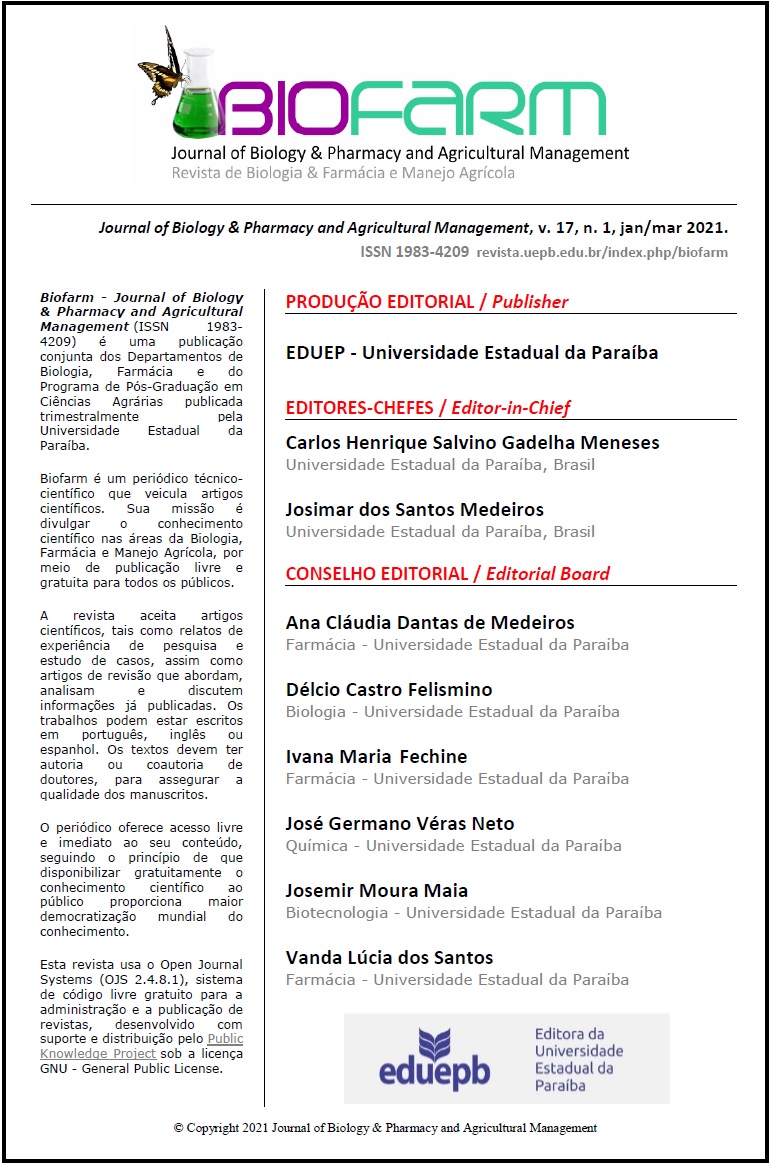DESENVOLVIMENTO E CARACTERIZAÇÃO QUÍMICA DE FRAGRÂNCIAS A PARTIR DE ÓLEOS ESSENCIAIS E FLAVORIZANTE SINTÉTICO
Resumo
Os perfumistas elaboram composições de fragrância a partir de matérias-primas odoríferas. Os perfumes recebem classificações conforme a concentração da fragrância nas suas formulações, como parfums (entre 15 e 30% de fragrância); eau de parfums (8 a 15% de fragrância); eau de toilettes (4 a 15% de fragrância) e os eau de colognes (3 a 5% de fragrância). O presente trabalho teve como objetivo desenvolver e caracterizar uma fragrância, e incorporá-la em um produto cosmético para uso em perfumaria. O desenvolvimento da fragrância foi baseado em 21 combinações de compostos aromáticos obtidos comercialmente ou preparados por hidrodestilação em Clevenger, incluindo ou não um aromatizante sintético. A fragrância selecionada continha uma mistura dos óleos essenciais (Pogostemon cablin, Amyris balsamifera, Citrus limon e Baccharis dracunculifolia) combinados a essência sintética de maracujá. A formulação de perfume definida consistiu em 7% da fragrância selecionada, etanol como veículo, propilenoglicol como umectante, triclosan como conservante e galaxolide como fixador. A técnica cromatografia gasosa acoplada a espectrometria de massas permitiu a caracterização química do perfume. A determinação do índice de retenção e comparação com a literatura e banco de dados da biblioteca Wiley permitiu a identificação das substâncias voláteis na formulação. Os principais constituintes voláteis determinados no perfume foram valerianol (12,5%), limoneno (6,7%) e β-cariofileno (6,7%). Foi possível demonstrar o potencial de fontes naturais, especialmente aquelas oriundos da biodiversidade brasileira, para produção de compostos aromáticos a partir destes resultados.
Downloads
Publicado
Como Citar
Edição
Seção
Licença
Copyright (c) 2023 BIOFARM - Journal of Biology & Pharmacy and Agricultural Management

Este trabalho está licenciado sob uma licença Creative Commons Attribution 4.0 International License.
Authors and co-authors retain copyright, but cede the right to first publication to the Journal of Biology & Pharmacy and Agricultural Management (BIOFARM).
Copyright encompasses exclusive rights to reproduce and deliver the article in all form and media, including reprints, photographs, microfilms and any other similar reproductions, as well as translations. The reproduction of any part of this journal, its storage in databases and its transmission by any form or media - such as electronic, electrostatic and mechanical copies, photocopies, recordings, magnetic media, etc. - will be allowed only with a written permission from the BIOFARM.
Articles published in BIOFARM will be Open-Access articles distributed under the terms and conditions of the Creative Commons Attribution License (CC BY). The copyright is retained by the author(s). BIOFARM will insert the following note at the end of the published text:
© 2023 by the authors; licensee BIOFARM, Campina Grande, Brazil. This article is an open access article distributed under the terms and conditions of the Creative Commons Attribution License (http://creativecommons.org/licenses/by/4.0/).


